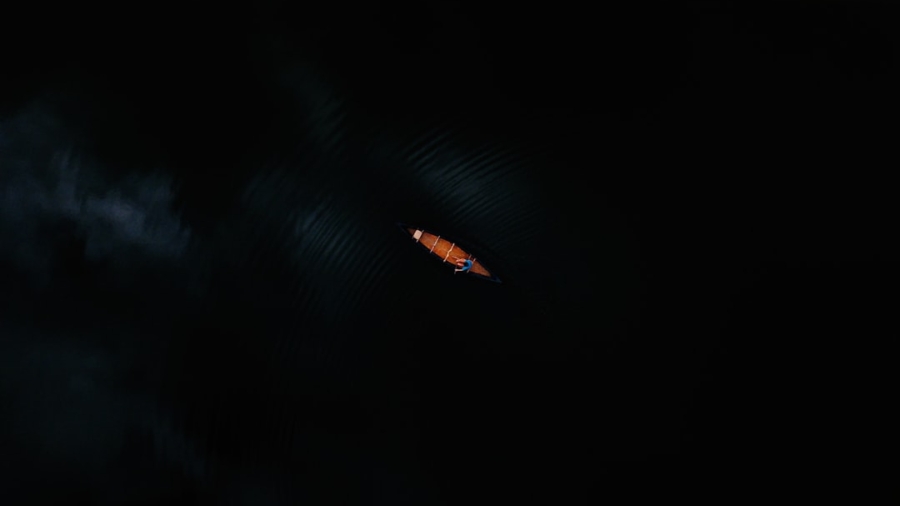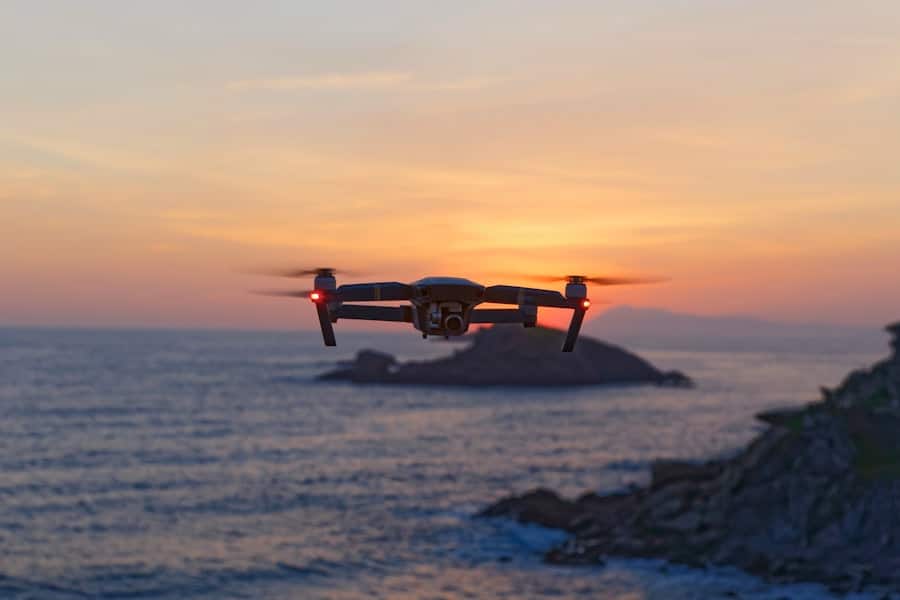The advent of artificial intelligence (AI) has revolutionized numerous fields, and space research is no exception. AI-powered drones are emerging as pivotal tools in the exploration of outer space, offering unprecedented capabilities for data collection, analysis, and operational efficiency. These drones, equipped with advanced algorithms and machine learning capabilities, can autonomously navigate complex environments, making them invaluable for missions that require precision and adaptability.
As humanity seeks to understand the cosmos better, the integration of AI into drone technology presents a transformative approach to gathering and interpreting data from celestial bodies. The utilization of drones in space research is not merely a technological advancement; it represents a paradigm shift in how we approach exploration. Traditional methods often involve costly and time-consuming missions that rely heavily on human oversight.
In contrast, AI-powered drones can operate in environments that are inhospitable to humans, such as the surface of Mars or the harsh conditions of outer planetary atmospheres. By leveraging AI, these drones can process vast amounts of data in real-time, allowing for quicker decision-making and more efficient mission execution. This article delves into the multifaceted role of AI-powered drones in space research, exploring their advantages, applications, challenges, and future potential.
Key Takeaways
- AI-powered drones are revolutionizing space research by providing advanced capabilities for exploration and data collection.
- AI plays a crucial role in space exploration by enabling autonomous decision-making, navigation, and data analysis for drones.
- Using drones in space research offers advantages such as cost-effectiveness, accessibility to remote locations, and reduced risk to human astronauts.
- AI-powered drones have diverse applications in space research, including planetary exploration, asteroid mining, and environmental monitoring.
- Challenges and limitations of AI-powered drones in space research include communication delays, power constraints, and the need for advanced AI algorithms for autonomous operation.
The Role of AI in Space Exploration
AI plays a critical role in enhancing the capabilities of drones used in space exploration. One of the most significant contributions of AI is its ability to analyze data collected from various sensors onboard these drones. For instance, AI algorithms can process images captured by cameras, identify geological features, and even detect signs of past or present life on other planets.
This capability is particularly crucial in missions where time is of the essence, as it allows scientists to focus on the most promising areas for further investigation without sifting through mountains of raw data manually. Moreover, AI enhances the autonomy of drones, enabling them to make decisions based on real-time environmental assessments. For example, during a mission to Mars, an AI-powered drone can autonomously navigate around obstacles, adjust its flight path based on atmospheric conditions, and prioritize data collection based on pre-defined scientific objectives.
This level of autonomy reduces the need for constant communication with mission control on Earth, which can be delayed by the vast distances involved. As a result, AI not only streamlines operations but also increases the overall efficiency and effectiveness of space missions.
Advantages of Using Drones in Space Research Missions
The advantages of employing drones in space research missions are manifold. First and foremost, drones can access areas that are otherwise unreachable or too dangerous for human exploration.
Drones can fly over these obstacles, providing a bird’s-eye view that enhances our understanding of the landscape and geological formations. This aerial perspective is invaluable for mapping and surveying large areas quickly and efficiently. Additionally, drones equipped with AI can significantly reduce mission costs.
Traditional space missions often require extensive planning and resources to send human crews or large rovers to distant locations. In contrast, deploying smaller drones can minimize logistical challenges and expenses while still achieving scientific objectives. The ability to conduct multiple flights and gather diverse data sets without the need for extensive infrastructure makes drones an attractive option for space agencies looking to maximize their research output within budget constraints.
Applications of AI-Powered Drones in Space Research
AI-powered drones have a wide array of applications in space research that extend beyond mere exploration. One prominent application is planetary mapping and surface analysis. Drones can be deployed to create high-resolution topographical maps of celestial bodies, providing critical insights into their geological history and potential for harboring life.
For example, NASA’s Perseverance rover is equipped with a drone named Ingenuity that has successfully conducted aerial surveys of Mars’ surface, capturing detailed images that inform scientists about the planet’s past climate and geological processes. Another significant application lies in environmental monitoring and atmospheric studies. Drones can be utilized to collect data on atmospheric composition, temperature variations, and weather patterns on other planets or moons.
This information is crucial for understanding the habitability of these celestial bodies and assessing their potential for future human colonization. For instance, studying the atmosphere of Venus using drones could yield insights into its extreme greenhouse effect and inform our understanding of climate change on Earth.
Challenges and Limitations of AI-Powered Drones in Space Research
Despite their numerous advantages, AI-powered drones face several challenges and limitations in space research. One primary concern is the reliability of AI algorithms in unpredictable environments. Space is inherently chaotic, with factors such as radiation exposure, extreme temperatures, and unpredictable weather patterns posing significant risks to drone operations.
Ensuring that AI systems can adapt to these conditions without human intervention remains a formidable challenge. Furthermore, the communication delay between Earth and distant celestial bodies complicates real-time decision-making for drones. While AI can enhance autonomy, there are still scenarios where immediate human input may be necessary.
For example, if a drone encounters an unexpected obstacle or anomaly during its mission, it may require guidance from mission control to determine the best course of action. This reliance on communication can limit the effectiveness of autonomous operations in certain situations.
Future Developments and Potential of AI-Powered Drones in Space Research
Enhanced Decision-Making Capabilities
One area ripe for development is the integration of more sophisticated machine learning algorithms that can improve decision-making capabilities under uncertain conditions. As researchers refine these algorithms, drones will become increasingly adept at navigating complex environments autonomously while making real-time adjustments based on their surroundings.
Advancements in Drone Design
Advancements in materials science could lead to the creation of more resilient drone designs capable of withstanding harsh extraterrestrial conditions. Lightweight yet durable materials could enhance flight performance while minimizing energy consumption.
Increased Operational Capabilities
Innovations in energy storage technologies may enable longer flight durations and greater operational ranges for drones deployed on distant planets or moons.
Case Studies: Successful Implementation of AI-Powered Drones in Space Research Missions
Several case studies illustrate the successful implementation of AI-powered drones in space research missions.
Ingenuity’s success demonstrated the feasibility of aerial exploration on Mars and provided valuable data that informed subsequent rover operations.
The helicopter’s ability to capture high-resolution images and scout terrain ahead of the Perseverance rover has significantly enhanced our understanding of Martian geology. Another compelling case study involves the European Space Agency’s (ESA) use of drones for lunar exploration. The agency has been developing autonomous drones designed to survey the Moon’s surface and identify potential landing sites for future crewed missions.
These drones are equipped with advanced imaging systems powered by AI algorithms that analyze terrain features in real-time, ensuring safe navigation and optimal site selection for landers.
Ethical and Legal Considerations of AI-Powered Drones in Space Research
As with any emerging technology, the deployment of AI-powered drones in space research raises ethical and legal considerations that must be addressed proactively. One significant concern revolves around data privacy and ownership. As drones collect vast amounts of data from celestial bodies, questions arise regarding who owns this information and how it should be used.
Establishing clear guidelines for data sharing among international space agencies will be essential to foster collaboration while protecting intellectual property rights. Additionally, there are ethical implications related to the potential impact of drone operations on extraterrestrial environments. The introduction of robotic explorers raises questions about contamination and preservation of pristine ecosystems on other planets or moons.
Ensuring that drone missions adhere to planetary protection protocols will be crucial to prevent unintended consequences that could compromise future scientific endeavors. In conclusion, AI-powered drones represent a groundbreaking advancement in space research, offering unique capabilities that enhance exploration efforts while addressing some of the inherent challenges associated with traditional methods. As technology continues to evolve, these drones will play an increasingly vital role in unraveling the mysteries of our universe while navigating the ethical landscape that accompanies such profound exploration endeavors.
A related article to “How AI-Powered Drones Are Assisting in Space Research Missions” is “How to Choose Laptop for Graphic Design” which discusses the importance of selecting the right laptop for graphic design work. This article provides valuable insights into the key features and specifications to consider when choosing a laptop for graphic design tasks. For more information, you can check out the article here.
FAQs
What are AI-powered drones?
AI-powered drones are unmanned aerial vehicles equipped with artificial intelligence technology that allows them to perform tasks autonomously, without direct human intervention. These drones are capable of making decisions and adapting to their environment using AI algorithms.
How are AI-powered drones assisting in space research missions?
AI-powered drones are being used in space research missions to assist in various tasks such as mapping and surveying planetary surfaces, collecting samples, and conducting scientific experiments. They can navigate through challenging environments, gather data, and transmit information back to researchers on Earth.
What are the advantages of using AI-powered drones in space research missions?
AI-powered drones offer several advantages in space research missions, including the ability to access remote or hazardous locations, perform repetitive tasks with precision, and operate in environments where human presence is not feasible. They also have the potential to reduce the time and cost of conducting research in space.
What AI technologies are integrated into AI-powered drones for space research missions?
AI technologies integrated into AI-powered drones for space research missions include machine learning algorithms for autonomous decision-making, computer vision for object recognition and navigation, and sensor fusion for gathering and interpreting data from the drone’s surroundings.
Are there any challenges associated with using AI-powered drones in space research missions?
Challenges associated with using AI-powered drones in space research missions include the need to ensure reliable communication with the drones over long distances, the development of robust AI algorithms for navigating and operating in extreme environments, and the integration of AI technologies with other systems on spacecraft.



